Icelandic cuisine is known worldwide for two very contrasting things. One is the innovative and modern Nordic cuisine. It stands for fresh, local ingredients and fermentation. On the other hand, there are some traditional specialties that originated in Iceland and are still only available there. One exception is skyr, a protein-rich curd cheese. It has made the leap into European supermarkets. Many other Icelandic specialties, on the other hand, have remained curiosities to this day. Some of them regularly end up on the hit lists of the world’s most disgusting foods. One of these delicacies that has endured a particularly high level of ridicule and contempt is hákarl, an austere-tasting snack made from the meat of the Greenland shark.

The Greenland shark – a profound creature
Not much is known about the Greenland shark, also known as the ice shark. Until now, this species was thought to live exclusively in the Arctic deep sea, until a specimen was spotted in the Caribbean in 2022. No one knows how many of them swim in the world’s oceans. The Greenland shark feels most comfortable in water depths between 1,000 and 2,500 meters and at temperatures of minus one to five degrees Celsius. The animals can weigh up to 1,200 kilograms and grow incredibly slowly, but they do so throughout their lives.
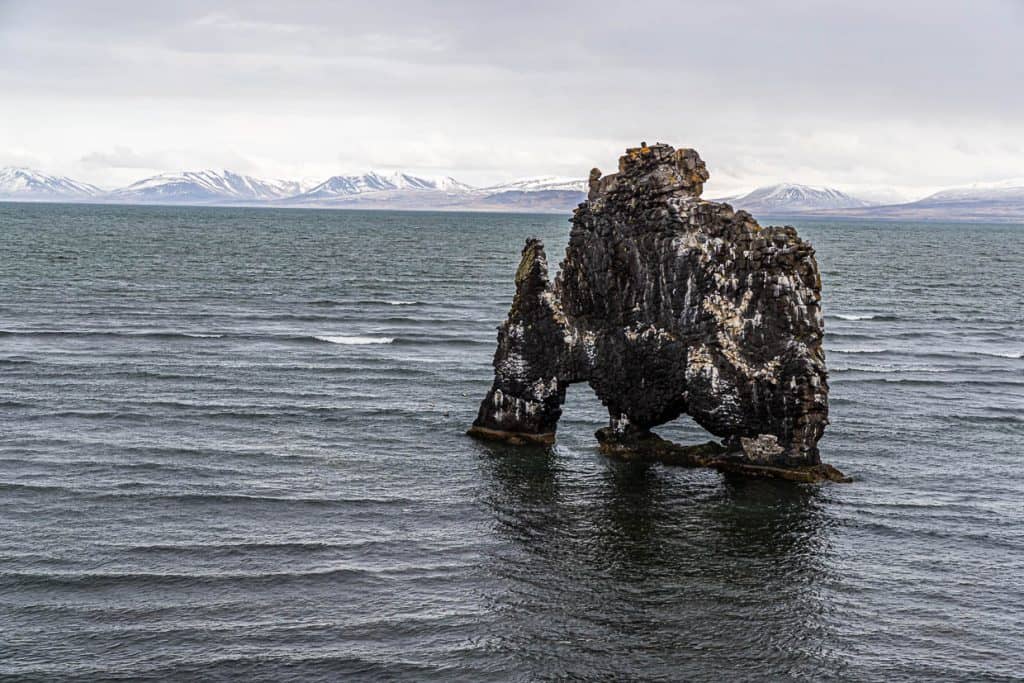
Greenland sharks belong to the sleeping sharks. With them everything goes very slowly. A female becomes sexually mature only at the tender age of 150 years. Of all vertebrates, the Greenland shark becomes the oldest. Only in 2016 it was found that it can live up to 400 years. Greenland sharks are perfectly adapted to life in the Arctic deep sea. In the past, lamp oil was extracted from their huge livers. Today, the Greenland shark is only by-catch. About 80 animals are caught by Icelandic fishermen every year. They are delivered to the few processing plants for Hákarl or end up in research stations. Since it has been known that the Greenland shark is the Methuselah of the world’s oceans, scientific interest in it has awakened.
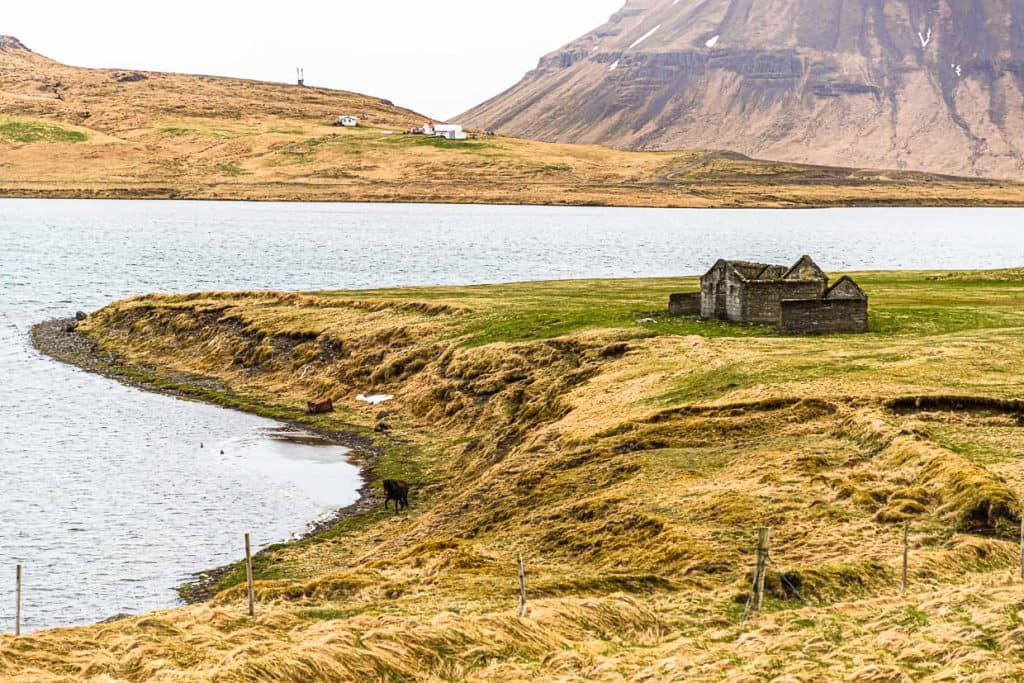
Hákarl – shark for the hardy
Hákarl is fermented shark or shark fermented according to an old tradition. The method dates back to a time when Iceland was very poor and the population suffered from hunger during the long winters. Traditionally, the shark was placed in a shallow hole and covered with sand and gravel. On top they put very heavy stones. They squeezed the body fluids out of the animal. This condition lasted from six to twelve months, depending on the season. The inedible and poisonous substances were supposed to come out in this way. This is the beginning of the actually unappetizing part, which contributes to the fact that eating the hákarl is considered a test of courage by tourists.
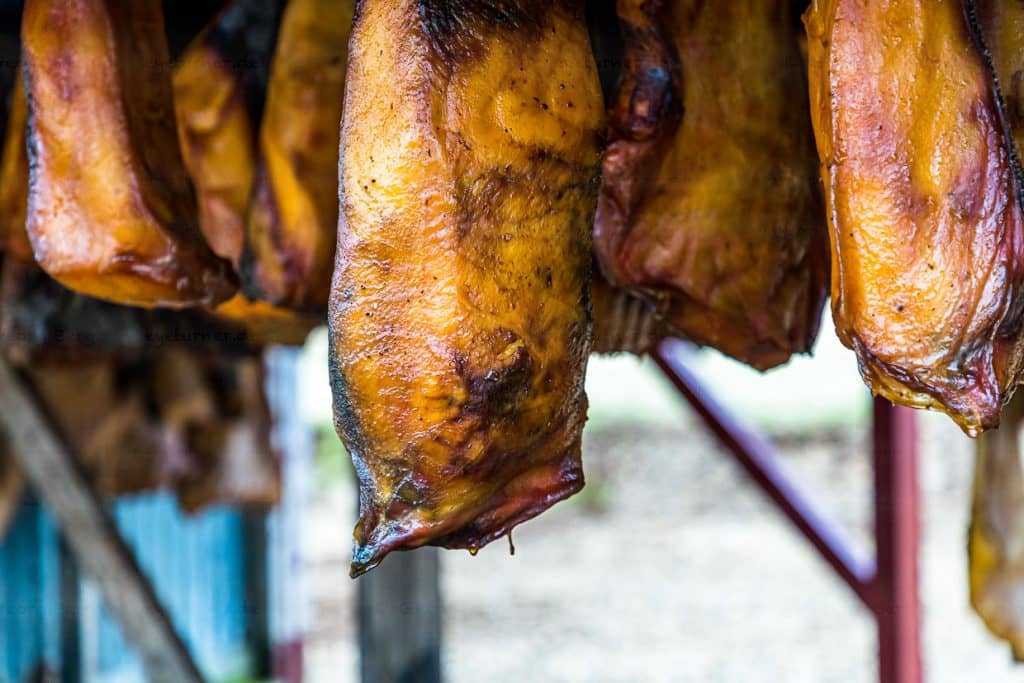
Hákarl is mainly obtained from the Greenland shark. This deep-sea dweller has no urinary tract to carry urine out of its body. It excretes urine through its skin, which leads to a high concentration of uric acid in the flesh. If a human were to eat a freshly caught Greenland shark, he or she might vomit blood as a reaction. It is only during further processing that the meat loses its toxic effect. Greenland shark is also sold as dry dog food. All these are valuable collection points for Hákarl to be on top of the ranking of disgusting food.
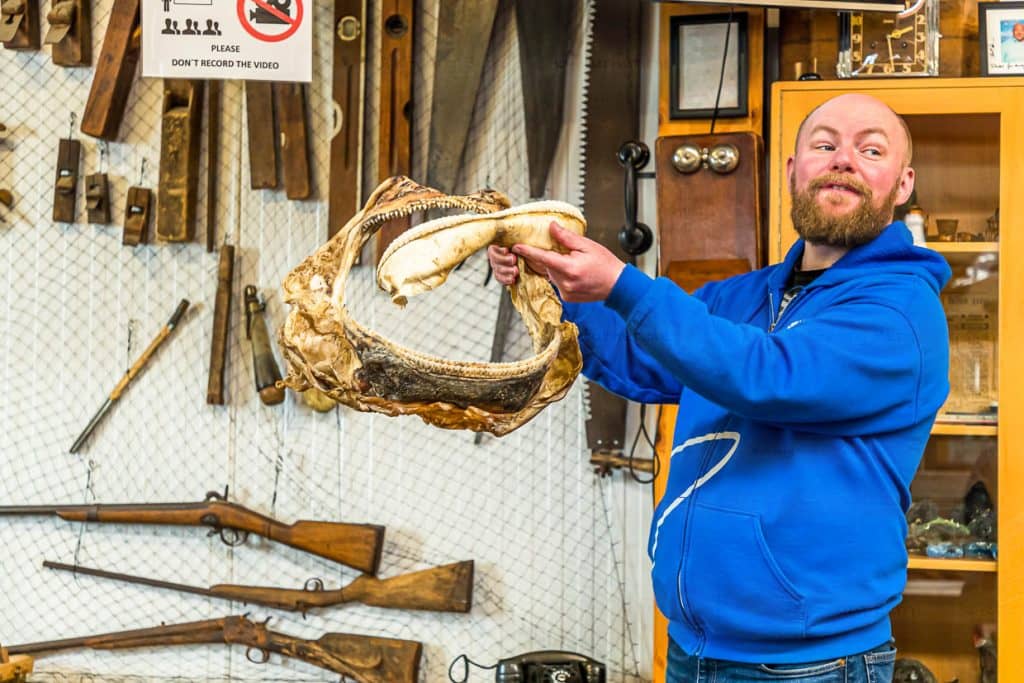
Shark Museum Bjarnahöfn
Hákarl has a tradition that is over 400 years old. Guðjón Hildibrandsson’s family has been catching and processing ice shark since 1608. Bjarnarhöfn is a remote farm on the Snæfellsness peninsula. It is 170 kilometers to Reykjavik and 25 to the nearest town. Snæfellsness is said to combine all of Iceland’s natural wonders in a small area. Glaciers, volcanoes, waterfalls, black lava beaches with bizarre rock formations, coastal hiking trails and even the possibility to taste the famous Gammel shark and learn about the tradition of shark fishing. This combination can only be found at Bjarnahöfn. Therefore, it is recommended to follow the signs along the lonely road and join a guided tour on Bjarnahöfn. By Icelandic standards, this is an inexpensive excursion at the equivalent of 10 euros per person.
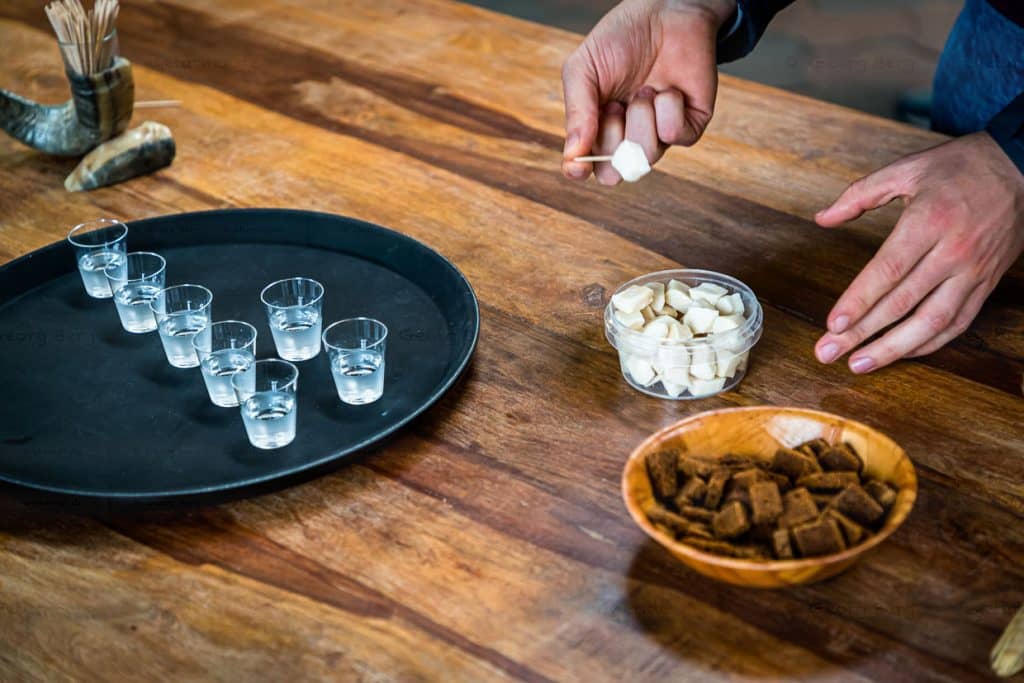
First rotting, then tasting
Because of the strong smell of ammonia, it was once said that during the curing process, sharks were urinated on in the hole in the ground to neutralize the toxins. But this is an old wives’ tale. The only urine involved here is that of the shark. After fermentation, or selective decomposition, which now takes place in vats rather than holes in the ground, the shark is cut into pieces and air-dried for several months. Over time, the shark acquires a brown crust. Still surrounding the shark meat is an olfactory aura to run away. If the wind is unfavorable and you approach a drying house for hákarl from the wrong side, a pungent urine smell hits you. How is it then possible that people voluntarily put a morsel of Greenland shark in their mouths?
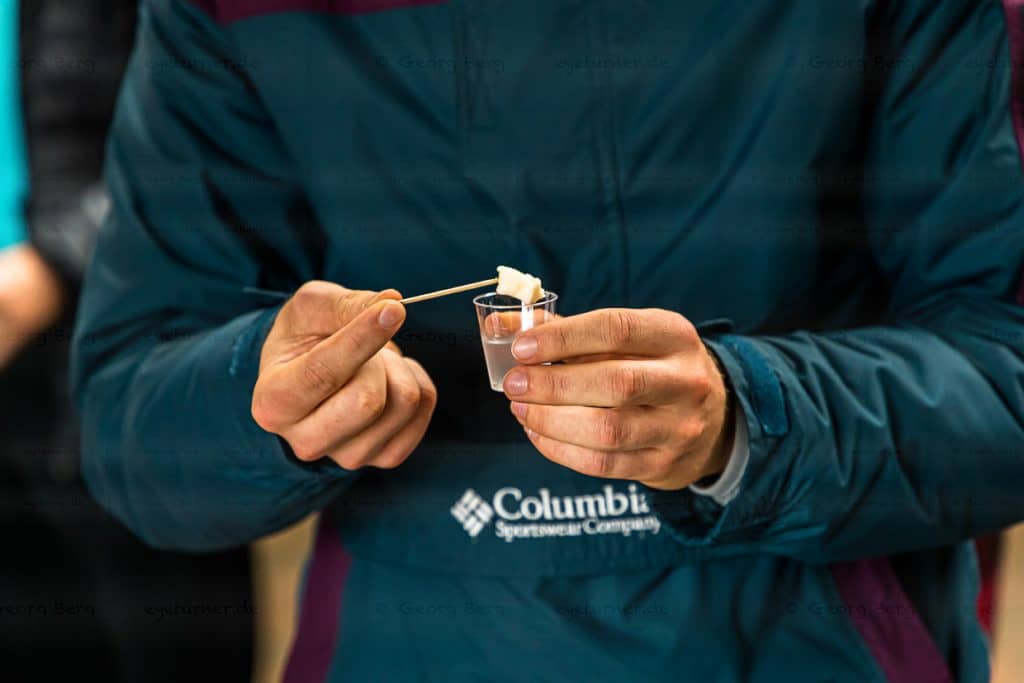
Test of courage with schnapps
The white, tender meat is cut into small cubes. Locals like Guðjón Hildibrandsson chew the meat cubes with gusto. He swears by the digestive and cleansing effects of shark meat and eats a few cubes every day. For the Icelanders, Hákarl is part of the traditional festivities. 95 percent of the production therefore goes into the Icelandic trade. Outside Iceland, it is hard to imagine Hákarl as an evening snack on the sofa like Guðjón. An encouragement to those who are still hesitant to try Hákarl: Worse than the taste, in any case, is the acrid smell that surrounds the dry hut. It is reminiscent of a very ripe moldy cheese. At Guðjón and his family’s house, beginners can also get a glass of Brennivín to help them along, if they wish. The Icelandic liquor is popularly known as Black Death. Since Prohibition, which took effect in Iceland in 1915, Brennivín has carried a black label, which used to have a skull and crossbones on it as a better deterrent.
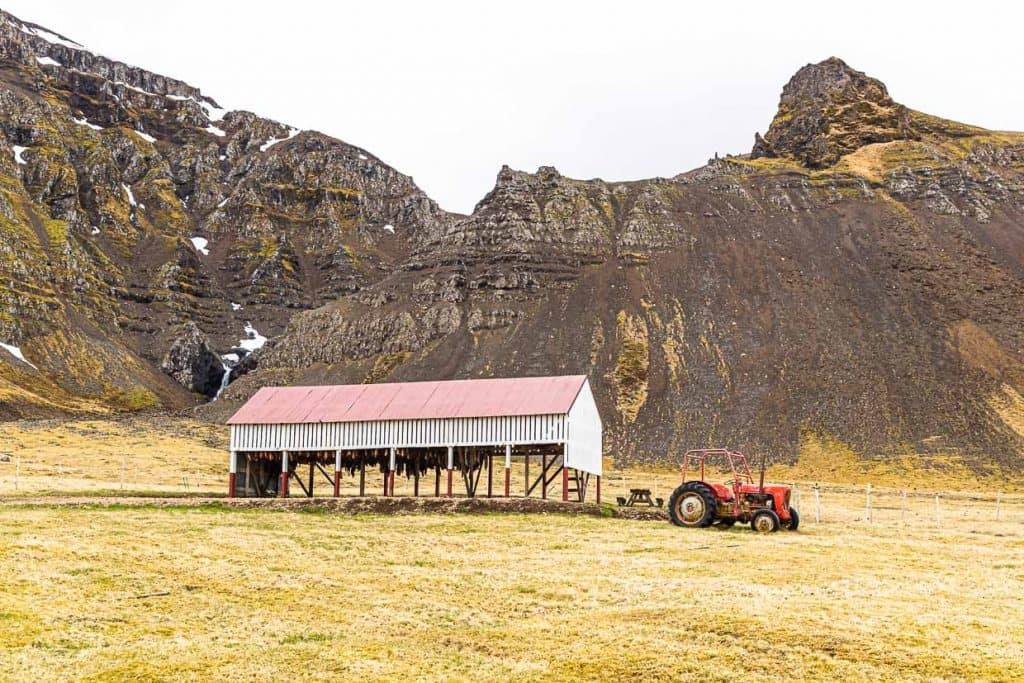
Bjarnahöfn Shark Museum is located on the Snæfellsness peninsula. The museum is open from April. For some time now, there has also been a bistro on the farm with a magnificent view of the bay, where shark fin soup is served in addition to carpaccio from the gray goose. Just behind the bistro is the drying house. But after more than 400 years in this place, Bjarnahöfn knows which way the wind blows and has cleverly placed the drying house.

